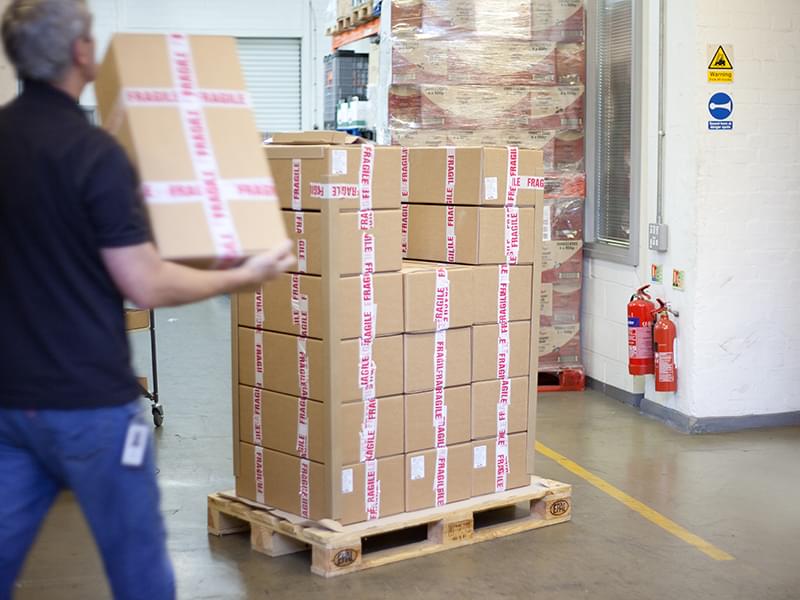There are several methods for evaluating the performance of a
packaging system: real-world shipping studies, laboratory
distribution testing, or a combination of both.
In a real-world shipping study, also called a field evaluation, a packaging system is shipped through the supply chain and then collected from its destination to see if it sustained any damage or failed to protect the contents within.
The purpose of laboratory distribution testing is to measure and predict how a packaging system will perform while traveling through its supply chain by recreating or simulating the hazards and conditions it may encounter. This is conducted in a controlled laboratory setting by expert engineers and technicians with years of experience recreating a variety of shipping environments.
Both tactics have their advantages, and often the two are conducted in concert to determine the root cause of a particular performance issue. However, there are a few key advantages that only laboratory distribution testing can offer:
Control
A test packaging system sent through a live supply chain will experience many rigors that cannot be objectively measured. If the test package sustains significant damage, there is virtually no way to pinpoint the cause of possible performance issues. In a laboratory testing environment, you have complete control over all elements and variables. Testing can be conducted at a range of intensity levels in order to simulate a variety of real-world shipment and handling hazards. This testing produces trend data that can help predict real-world performance and determine the exact conditions under which a packaging system might begin to underperform.
Repeatability and objectivity
One of the purposes of laboratory testing is research and development. If you are testing variations on a packaging system to see how it performs under certain conditions, you must be able to recreate those exact conditions over and over to ensure objective assessment of any changes or modifications. This is only possible in a laboratory setting. This level of repeatability allows you to compare different packaging systems, introduce additional variables, and objectively measure the results.
Real-time monitoring
In some cases, a human eye is needed to identify and confirm the root cause of a possible issue. This is virtually impossible with real-world shipping trials. In the laboratory environment, however, nearly every moment of the testing process can be observed in real time. Expert technicians can monitor testing in person, or the entire procedure can be captured on video for future review and further analysis.
Cost savings
There are numerous hidden costs to real-life shipment trials. If a packaged product sustains damage at some point in the supply chain, you may not be able to determine the source without knowing the exact hazards the package encountered, or a test package may be lost altogether and not return for inspection. In both cases, there is no data to study or learn form and thus no return on the cost of the lost or damaged product.
Lab testing can help you pinpoint the exact cause of recurring damage in a particular package system and make changes to reduce the likelihood of damage. Additionally, it is not uncommon for companies to discover through lab testing that they can
reduce the amount of packaging material being used without compromising performance. Changes like these applied across thousands of packages a year can lead to significant savings for a company.
Accelerating time to market
Laboratory testing eliminates the need to wait an entire shipping cycle to test every iteration of a packaging system. An experienced distribution testing laboratory can recreate supply chain conditions at an accelerated pace and make changes quickly, shortening the validation process significantly. This means you can predict your project’s overall timeline more accurately and go to market faster.
Regulatory compliance
Many manufacturers first seek laboratory distribution testing to achieve
regulatory compliance. Testing engineers often have many years of experience with regulatory testing and are very familiar with the test specifications required. An experienced distribution testing lab can help you navigate the regulatory environment and guide you through the process, minimizing stress and delays.
--
Laboratory
distribution testing is an invaluable tool for evaluating package performance and retaining a competitive advantage. An experienced testing partner can help you make smart, fast decisions about your packaging system, achieve regulatory compliance, and minimize disruption and delays.
To learn more about how distribution testing can help your business, get in touch with Tim Rice at 517 322 2400 or trice@smithers.com.

